- Home
- Medicine List
- Life saving Drugs
- Other Lifesaving Drugs
- Tacrolimus 1mg / 5mg
Tacrolimus 1mg / 5mg
- Order
- Directions
- Comments
- Related Products
MedEx answers any queries you might have regarding Tacrolimus purchase, shipping and payment terms.
Feel free to contact support through inquiry form, MedeEx is fully dedicated towards your needs 24/7.
Tacrolimus 1 mg is used to prevent transplant rejection after organ transplantation. It is included in the official list of vital and important medicines. The main clinical effect of Tacrolimus is associated with a powerful selective action against t-lymphocytes, which are involved in the rejection of transplant. Tacrolimus blocks activation of t-lymphocytes, inhibition of T-cell proliferation and t-cell functions, thereby reducing the risk of transplant rejection. Characteristics of drug absorption from the gastrointestinal tract after oral reception and its kinetics may vary both for different patients and for one patient. Peak concentration is observed in the period from 0.5 to 4 hours after reception. The half-life of the drug from the blood (mainly by metabolism in the liver and small intestine) is, on average, 8-12 hours, but can be from 4 to 41 hours.
Indications, methods of application and dosage
Tacrolimus 1 mg is used for prevention and treatment of rejection during transplantation of solid organs, acute and chronic graft-versus-host reactions, as well as for the treatment of atopic dermatitis, eczema and psoriasis. Tacrolimus 1 mg can be used both orally and intravenously.
During maintenance therapy, the dosage of Tacrolimus 1 mg should be adjusted depending on the individual needs of the patient, taking into account the results of monitoring the drug levels in the patient’s blood. Therapeutic concentration of drug in the blood is considered to be 5-15 ng/ml. If the concentration is more than 20 ng/ml, the risk of nephrotoxicity increases significantly.
Side effects
Tacrolimus 1 mg causes side effects, typical for all drugs-inhibitors of calcineurin. Most often there are neurotoxicity, nephrotoxicity, glucose metabolism disorders and hypertension. Electrolyte disorders (hypomagnesemia, hypokalemia), thrombotic thrombocytopenic purpura and lymphoproliferative diseases are much less common. Unlike cyclosporine A, Tacrolimus rarely causes expressed hepatic toxicity, hirsutism and gum hyperplasia. The severity of side effects significantly depends on premorbid background, combined use of other immunosuppressants, the presence of somatic pathology and toxicity of the treatment. Thus, toxicity data for patients after transplantation of AGSCS vary significantly from data after transplantation of solid organs.
